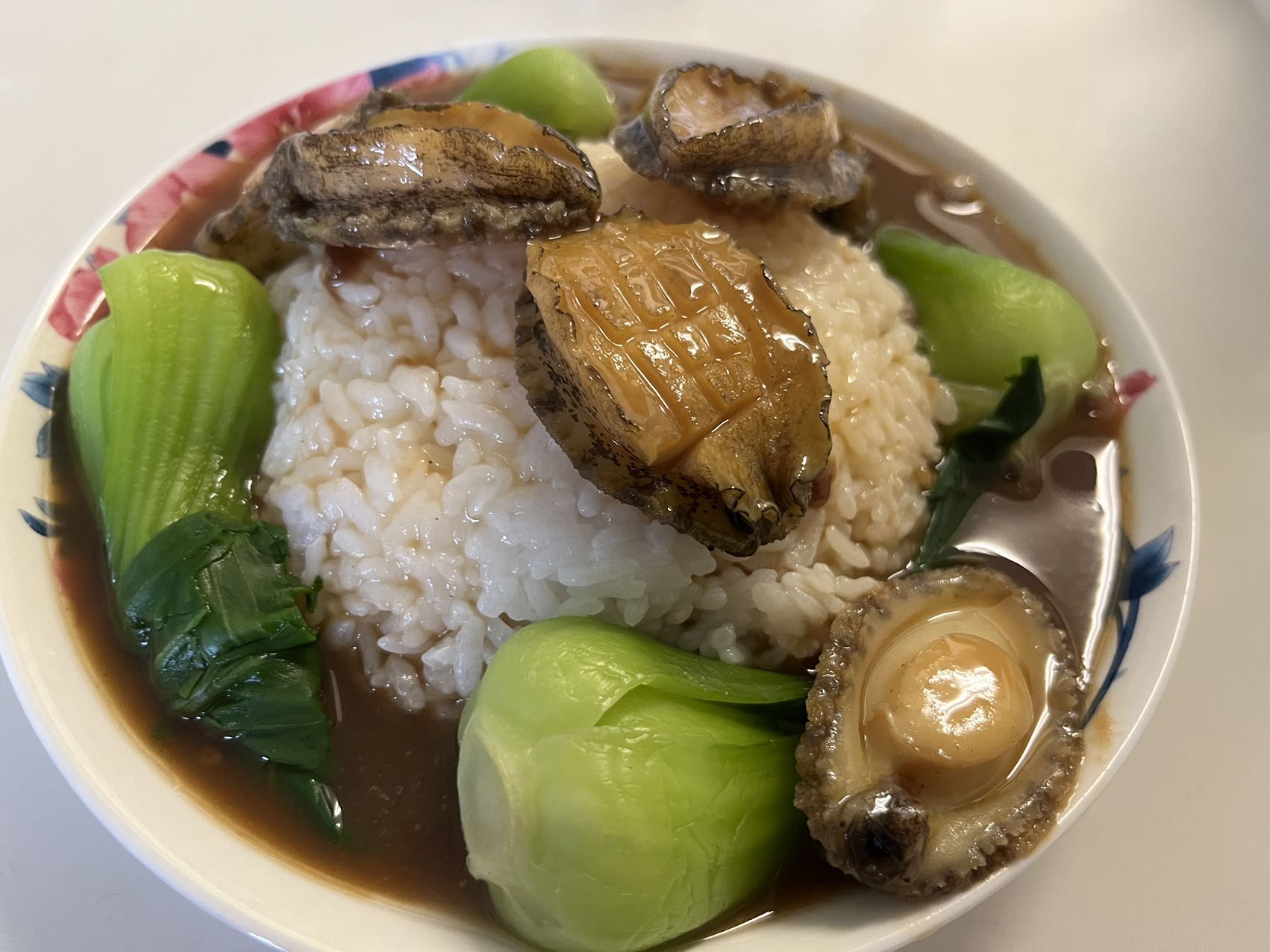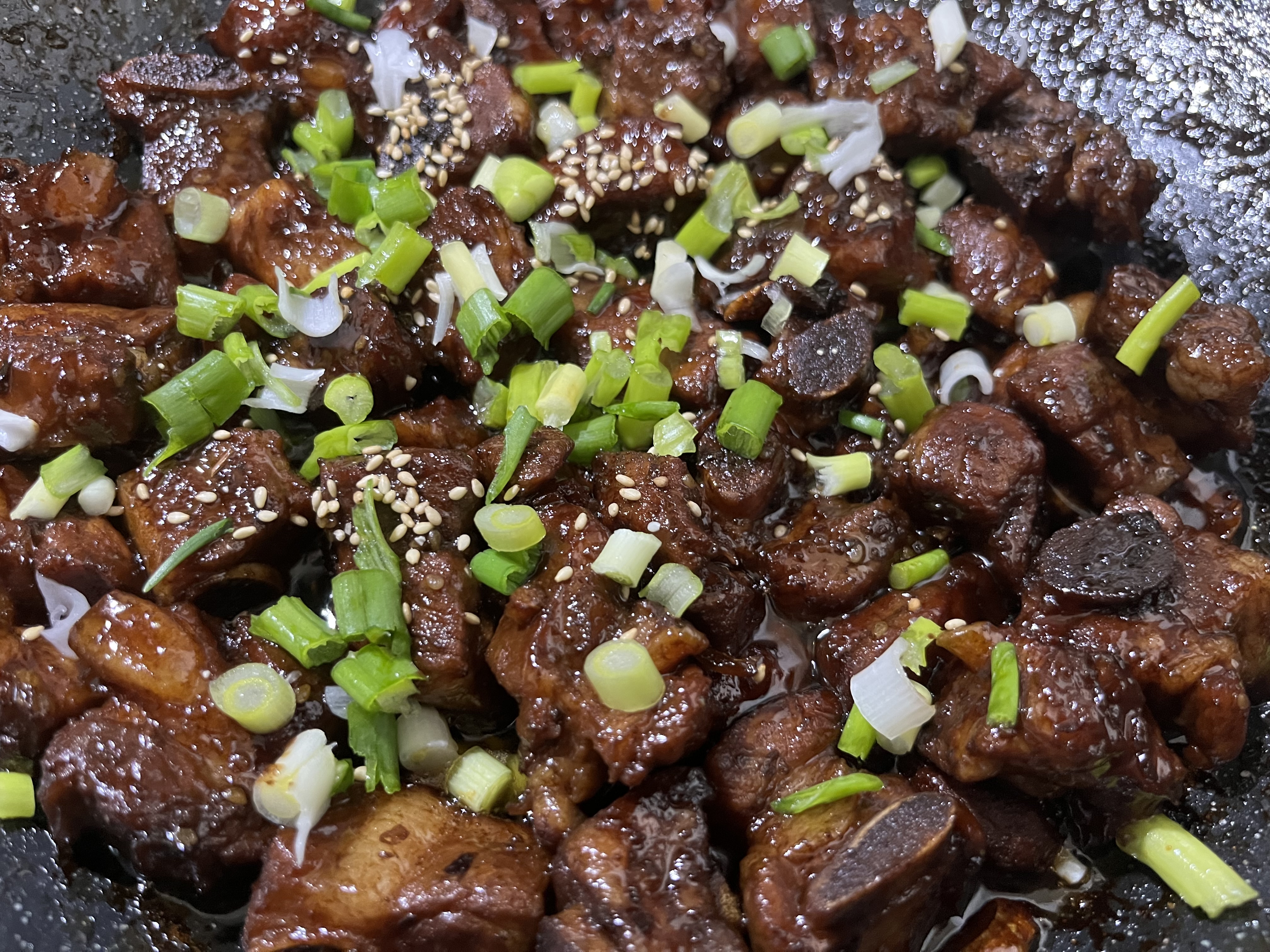The taste from the ocean floor of the deep sea, mixed with the fresh green from the primal land, combine to produce a masterwork of delicacy.
Abalone Rice 鲍鱼捞饭

Ingredients
- Abalone x6 鲍鱼
- Bok Choy/asparagus x4 小青菜/芦笋
- A bowl of cooked white rice 米饭
- 1 teaspoon of oyster sauce 蚝油
- 2 teaspoons of soy sauce 生抽
- 1 teaspoon of old soy sauce 老抽
- 2 teaspoons of cooking wine 料酒
- 2 teaspoons of starch 淀粉
- 1 slice of ginger 姜
- A little bit of white pepper 白胡椒
Instructions
- Clean the abalones and cut grid-like patterns on the surface.
- Put cooking wine and white pepper to marinate them for 30 min.
- Start boiling some water and put a slice of ginger and a little more cooking wine in it.
- When the water is boiling, put the abalones in and take them out after 3 min.
- Put bok choy in the water afterward and take them out after they're cooked.
- Put all the sauces listed and starch in. Add more water if needed.
- Wait until the mixture becomes sticky and the volume shrinks to the desired size.
- Put the abalones back in and turn off the heat.
- Arrange rice and bok choy and pour the abalones + sauce onto them.
- Done and enjoy!
Don't overcook the abalones. 3 minutes should be enough for small ones.

